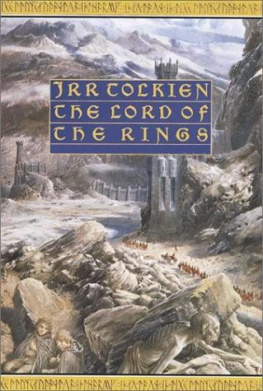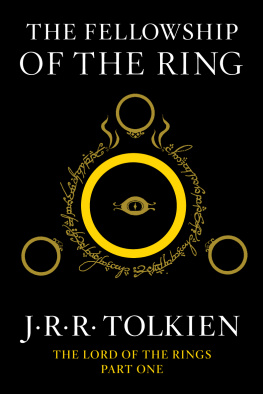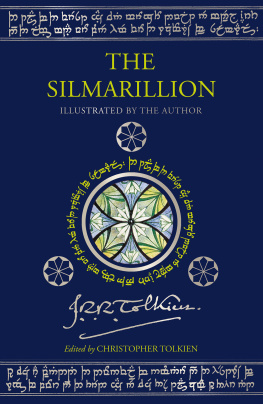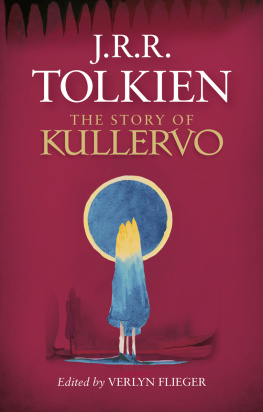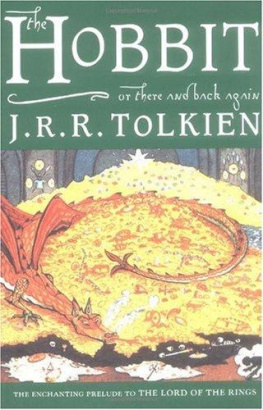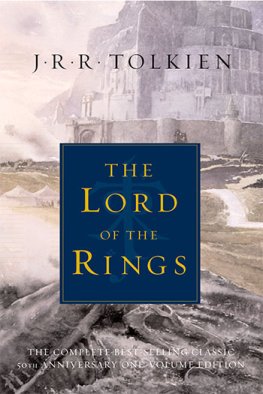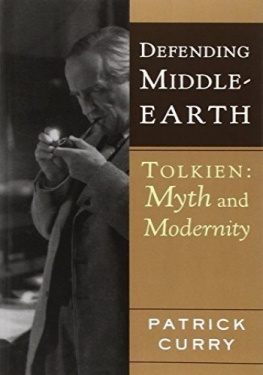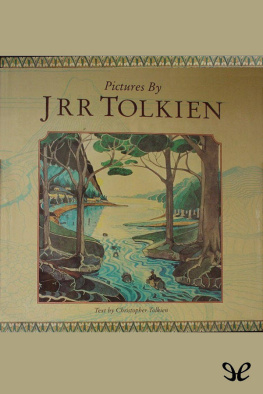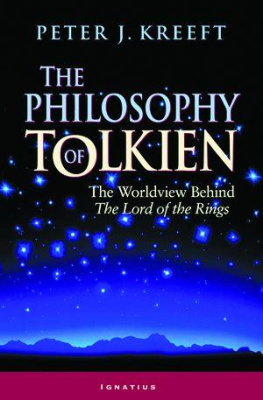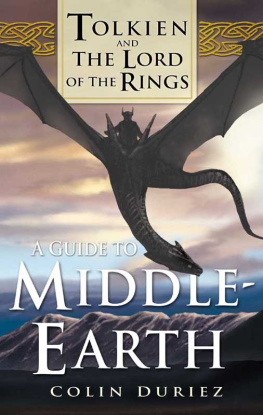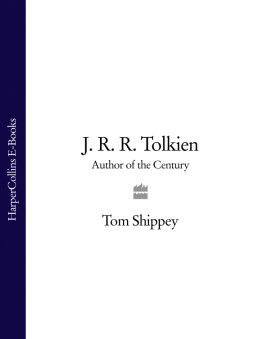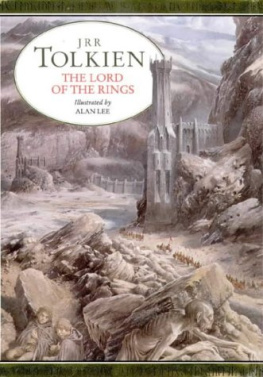J.R.R. Tolkien - The Lord of the Rings 50th Anniversary
Here you can read online J.R.R. Tolkien - The Lord of the Rings 50th Anniversary full text of the book (entire story) in english for free. Download pdf and epub, get meaning, cover and reviews about this ebook. year: 2009, publisher: HarperCollins Ebooks, genre: Religion. Description of the work, (preface) as well as reviews are available. Best literature library LitArk.com created for fans of good reading and offers a wide selection of genres:
Romance novel
Science fiction
Adventure
Detective
Science
History
Home and family
Prose
Art
Politics
Computer
Non-fiction
Religion
Business
Children
Humor
Choose a favorite category and find really read worthwhile books. Enjoy immersion in the world of imagination, feel the emotions of the characters or learn something new for yourself, make an fascinating discovery.

- Book:The Lord of the Rings 50th Anniversary
- Author:
- Publisher:HarperCollins Ebooks
- Genre:
- Year:2009
- Rating:5 / 5
- Favourites:Add to favourites
- Your mark:
- 100
- 1
- 2
- 3
- 4
- 5
The Lord of the Rings 50th Anniversary: summary, description and annotation
We offer to read an annotation, description, summary or preface (depends on what the author of the book "The Lord of the Rings 50th Anniversary" wrote himself). If you haven't found the necessary information about the book — write in the comments, we will try to find it.
The Lord of the Rings 50th Anniversary — read online for free the complete book (whole text) full work
Below is the text of the book, divided by pages. System saving the place of the last page read, allows you to conveniently read the book "The Lord of the Rings 50th Anniversary" online for free, without having to search again every time where you left off. Put a bookmark, and you can go to the page where you finished reading at any time.
Font size:
Interval:
Bookmark:
HarperCollins Publishers
77-85 Fulham Palace Road,
Hammersmith, London w6 8JB
www.tolkien.co.uk
Published by HarperCollinsPublishers 2005
This edition is based on the reset edition first published 2002,
which is a revised version of the reset edition first published 1994
THE FELLOWSHIP OF THE RING first published in Great Britain
by George Allen & Unwin 1954, Second Edition 1966
THE TWO TOWERS first published in Great Britain by
George Allen & Unwin 1954, Second Edition 1966
THE RETURN OF THE KING first published in Great Britain
by George Allen & Unwin 1955, Second Edition 1966
First published in one volume 1968
THE FELLOWSHIP OF THE RING
The Trustees of The J.R.R. Tolkien 1967 Settlement 1954, 1966
THE TWO TOWERS
The Trustees of The J.R.R. Tolkien 1967 Settlement 1954, 1966
THE RETURN OF THE KING
The Trustees of The J.R.R. Tolkien 1967 Settlement 1955, 1966
 and Tolkien are registered trademarks of The J.R.R Tolkien Estate Limited
and Tolkien are registered trademarks of The J.R.R Tolkien Estate Limited
EPub Edition MARCH 2009 ISBN: 978-0-007-32259-6
All rights reserved under International and Pan-American Copyright Conventions. By payment of the required fees, you have been granted the non-exclusive, non-transferable right to access and read the text of this e-book on-screen. No part of this text may be reproduced, transmitted, down-loaded, decompiled, reverse engineered, or stored in or introduced into any information storage and retrieval system, in any form or by any means, whether electronic or mechanical, now known or hereinafter invented, without the express written permission of HarperCollins e-books.
Three Rings for the Elven-kings under the sky,
Seven for the Dwarf-lords in their halls of stone,
Nine for Mortal Men doomed to die,
One for the Dark Lord on his dark throne
In the Land of Mordor where the Shadows lie.
One Ring to rule them all, One Ring to find them,
One Ring to bring them all and in the darkness bind them
In the Land of Mordor where the Shadows lie.
J.R.R. Tolkiens The Lord of the Rings is often erroneously called a trilogy, when it is in fact a single novel, consisting of six books plus appendices, sometimes published in three volumes.
The first volume, The Fellowship of the Ring, was published in Great Britain by the London firm George Allen & Unwin on 29 July 1954; an American edition followed on 21 October of the same year, published by Houghton Mifflin Company of Boston. In the production of this first volume, Tolkien experienced what became for him a continual problem: printers errors and compositors mistakes, including well-intentioned corrections of his sometimes idiosyncratic usage. These corrections include the altering of dwarves to dwarfs, elvish to elfish, further to farther, nasturtians to nasturtiums, try and say to try to say and (worst of all to Tolkien) elven to elfin. In a work such as The Lord of the Rings, containing invented languages and delicately constructed nomenclatures, errors and inconsistencies impede both the understanding and the appreciation of serious readers - and Tolkien had many such readers from very early on. Even before the publication of the third volume, which contained much hitherto unrevealed information on the invented languages and writing systems, Tolkien received many letters from readers written in these systems, in addition to numerous enquiries on the finer points of their usage.
The second volume, The Two Towers, was published in England on 11 November 1954 and in the United States on 21 April 1955. Meanwhile Tolkien worked to keep a promise he had made in the foreword to volume one: that an index of names and strange words would appear in the third volume. As originally planned, this index would contain much etymological information on the languages, particularly on the elven tongues, with a large vocabulary. It proved the chief cause of the delay in publishing volume three, which in the end contained no index at all, only an apology from the publisher for its absence. For Tolkien had abandoned work on it after indexing volumes one and two, believing its size and therefore its cost to be ruinous.
Volume three, The Return of the King, finally appeared in England on 20 October 1955 and in the United States on 5 January 1956. With the appearance of the third volume, The Lord of the Rings was published in its entirety, and its first edition text remained virtually unchanged for a decade. Tolkien had made a few small corrections, but further errors entered The Fellowship of the Ring in its December 1954 second impression when the printer, having distributed the type after the first printing, reset the book without informing the author or publisher. These include misrepresentations of the original printed text - that is, words and phrases that read acceptably in context, but which depart from Tolkiens wording as originally written and published.
In 1965, stemming from what then appeared to be copyright problems in the United States, an American paperback firm published an unauthorized and non-royalty-paying edition of The Lord of the Rings. For this new edition by Ace Books the text of the narrative was reset, thus introducing new typographical errors; the appendices, however, were reproduced photographically from the hardcover edition, and remain consistent with it.
Tolkien set to work on his first revision of the text so that a newly revised and authorized edition could successfully compete on the American market. This first revision of the text was published in America in paperback by Ballantine Books, under licence from Houghton Mifflin, in October 1965. In addition to revisions within the text itself, Tolkien replaced his original foreword with a new one. He was pleased to remove the original foreword; in his check copy, he wrote of it: confusing (as it does) real personal matters with the machinery of the Tale, is a serious mistake. Tolkien also added an extension to the prologue and an index - not the detailed index of names promised in the first edition, but, rather, a bald index with only names and page references. Additionally, at this time the appendices were greatly revised.
Tolkien received his copies of the Ballantine edition in late January 1966, and in early February he recorded in his diary that he had worked for some hours on the Appendices in Ballantine version & found more errors than I at first expected. Soon after this he sent a small number of further revisions to Ballantine for the appendices, including the now well-known addition of Estella Bolgeras wife of Meriadoc in the family trees in Appendix C. Most of these revisions, which entered variously in the third and fourth impressions (June and August 1966) of volume three, and which were not always inserted correctly (thereby causing further confusion in the text), somehow never made it into the main sequence of revision in the three-volume British hardcover edition, and for long remained anomalies. Tolkien once wrote, concerning the revising of The Lord of the Rings, that perhaps he had failed to keep his notes in order; this errant branch of revision seems likely to be an example of that disorder - either in his notes or in the ability of his publishers to follow them with utmost accuracy.
The revised text first appeared in Great Britain in a three-volume hardcover Second Edition from Allen & Unwin on 27 October 1966. But again there were problems. Although the revisions Tolkien sent to America of the text itself were available to be utilized in the new British edition, his extensive revisions to the appendices were lost after being entered into the Ballantine edition. Allen & Unwin were forced to reset the appendices using the copy as published in the first Ballantine edition. This did not include Tolkiens second, small set of revisions sent to Ballantine; but, more significantly, it did include a great number of errors and omissions, many of which were not discovered until long afterwards. Thus, in the appendices, a close scrutiny of the first edition text and of the much later corrected impressions of the second edition is necessary to discern whether any particular change in this edition is authorial or erroneous.
Font size:
Interval:
Bookmark:
Similar books «The Lord of the Rings 50th Anniversary»
Look at similar books to The Lord of the Rings 50th Anniversary. We have selected literature similar in name and meaning in the hope of providing readers with more options to find new, interesting, not yet read works.
Discussion, reviews of the book The Lord of the Rings 50th Anniversary and just readers' own opinions. Leave your comments, write what you think about the work, its meaning or the main characters. Specify what exactly you liked and what you didn't like, and why you think so.

